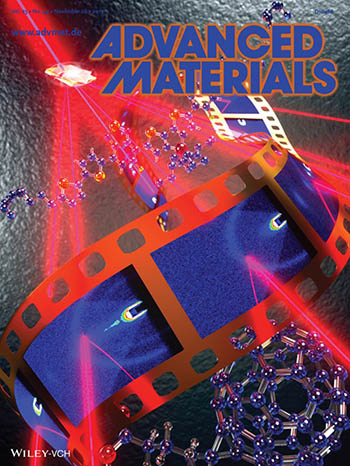X-RAY RUNS: Apply for Beamtime
2017 Nov 1 - Dec 21
2018 Feb 7 - Apr 3
2018 Proposal/BTR deadline: 12/1/17
2018 Apr 11 - Jun 4
2018 Proposal/BTR deadline: 2/1/18
Additives control the structural evolution in small-molecule organic solar cells.
Spin coating is a standard technique, commonly used to prepare organic thin films from a solution. In order to achieve high-performance optoelectronic devices, such as solar cells based on spin-coated organic semiconductors, there is a need to control the structure, the morphology and the degree of phase separation of the organic semiconductor. In a recent collaboration between the University of California Santa Barbara (UCSB) and King Abdullah University of Science and Technology (KAUST) in Saudi Arabia, two research groups have teamed up recently to perform experiments at the Cornell and Stanford synchrotrons, in order to elucidate the role of additives in spin-coated small molecule organic semiconductors. Additives have become prevalent in organic solar cell research, playing an important role in improving solar cell efficiency, but their role is not very well understood, partly because it is challenging to probe thin film formation during spin coating. A recent breakthrough by the KAUST team has now made it feasible to perform X-ray scattering measurements during the spin coating process. The joint study has been featured on the cover of Advanced Materials [1].

Figure 1. Real-time and in-situ study of the additive effect on the thin film morphology of a bulk heterojunction solar cell. The image depicts the in-situ spin coater, the scattering from the film, as well as the molecules involved. [1]
A soluable small-molecule thiophene derivative was mixed with PCBM, a functionalized bucky ball frequently used in bulk heterojunction solar cells. The UCSB team previously found that the efficiency of the solar cell could be improved from about 2% to 7% when less than one volume percent of the small molecule di-iodo-octane was added to the solution. What’s more, these improvements could not be achieved by thermal annealing alone. Ex-situ studies of the devices at the Stanford Synchrotron Radiation Lab (SSRL) revealed that the high performance film obtained with the additive display a different structure than the films obtained without additive. However, the mechanism of the additive-controlled crystallization was not known.
The UCSB team joined forces with the KAUST group led by Aram Amassian to perform in-situ real-time investigations at the CHESS D1 station. KAUST postdoc Kang Wei Chou had developed an in-situ spin coater in earlier studies [2], and brought this device to CHESS. D-line is located on a hard-bent dipole magnet at the Cornell storage ring and uses multilayer optics for high-flux. Samples were studied in grazing-incidence geometry and scattered x-rays were detected using a fast-framing pixel array detector. Signals were recorded at a speed of five images per second.
Comparing bulk hetero junction layers obtained with and without additive, the researchers found that pure thin films crystallized after about 5 sec of spinning and maintained their structure when completely dry. Thin films with additive, however, formed a transient structure after 5 seconds that started to transform into a different polymorph after 20 sec of spinning. Even after the end of the spinning stage at 60 sec, the film morphology continued to change during drying, and became fully ordered only after 100 sec. The real-time results highlight the complexity of the effect of the additive and can only be probed in-situ.
Figure 2. Real-time in situ spin coating studies of a bulk heterojunction thin film for organic solar cells. (a) The morphology of the film without additive forms during spinning and remains the same when fully dried. (b) The additive gives rise to a transient structure which transforms into a different polymorph in a slow drying process. [1]
References:
[1] Louis A. Perez, Kang Wei Chou, John A. Love, Thomas S. van der Poll, Detlef-M. Smilgies, Thuc-Quyen Nguyen, Edward J. Kramer, Aram Amassian, and Guillermo C. Bazan: "Solvent Additive Effects on Small Molecule Crystallization in Bulk Heterojunction Solar Cells Probed During Spin Casting," Adv. Mater. 25, 6380–6384 (2013).
[2] Kang Wei Chou, Buyi Yan, Ruipeng Li, Er Qiang Li, Kui Zhao, Dalaver H. Anjum , Steven Alvarez, Robert Gassawa , Alan Biocca, Sigurdur T. Thoroddsen , Alexander Hexemer, and Aram Amassian: "Spin-Cast Bulk Heterojunction Solar Cells: A Dynamical Investigation," Adv. Mater. 2013, 25, 1923–1929 (2013).
Submitted by: Detlef Smilgies, CHESS, Cornell University
01/17/2014
